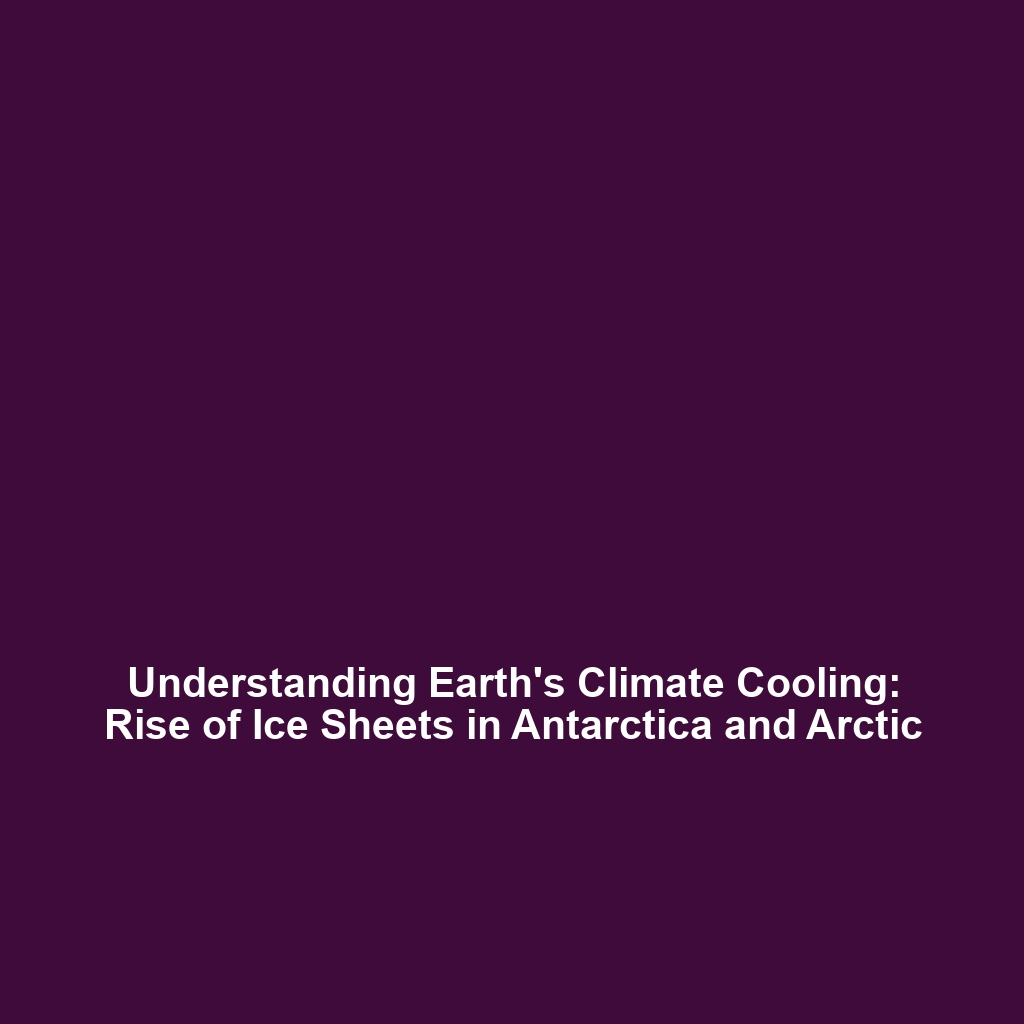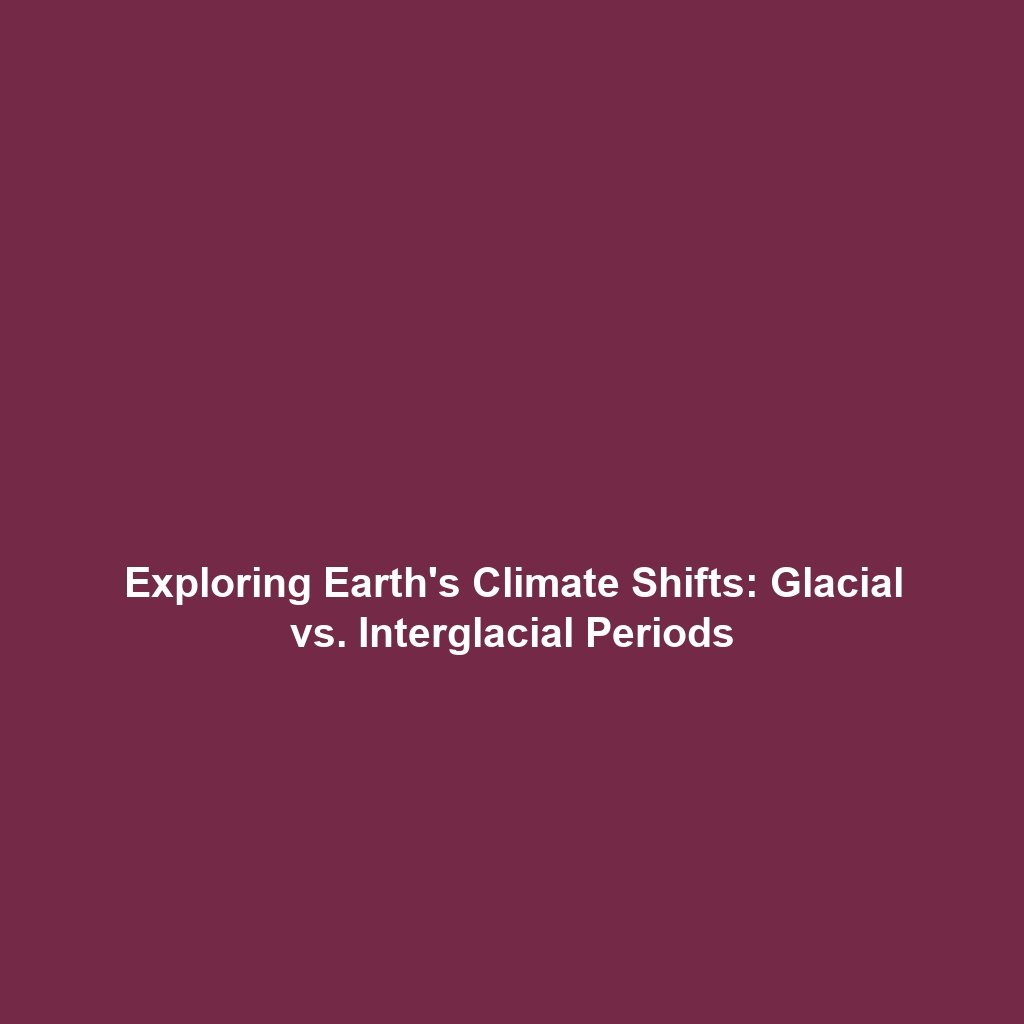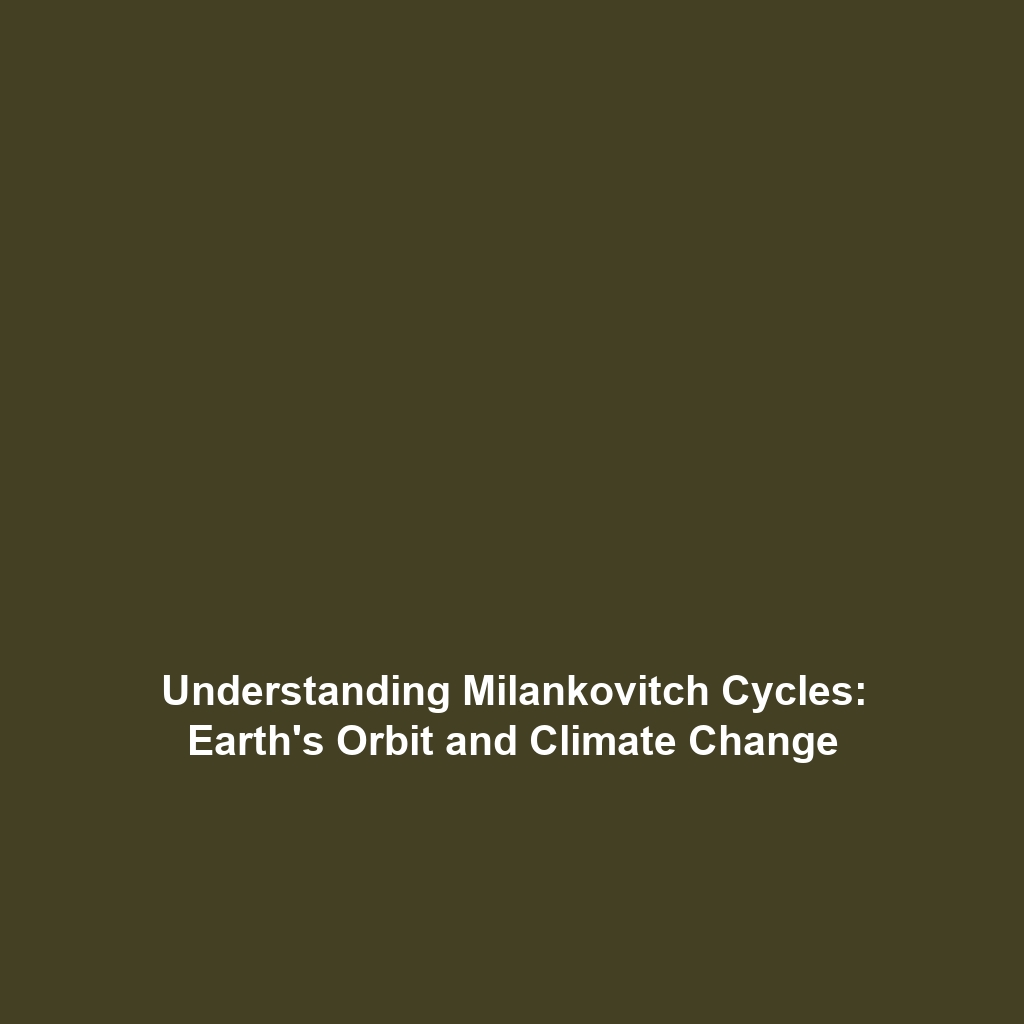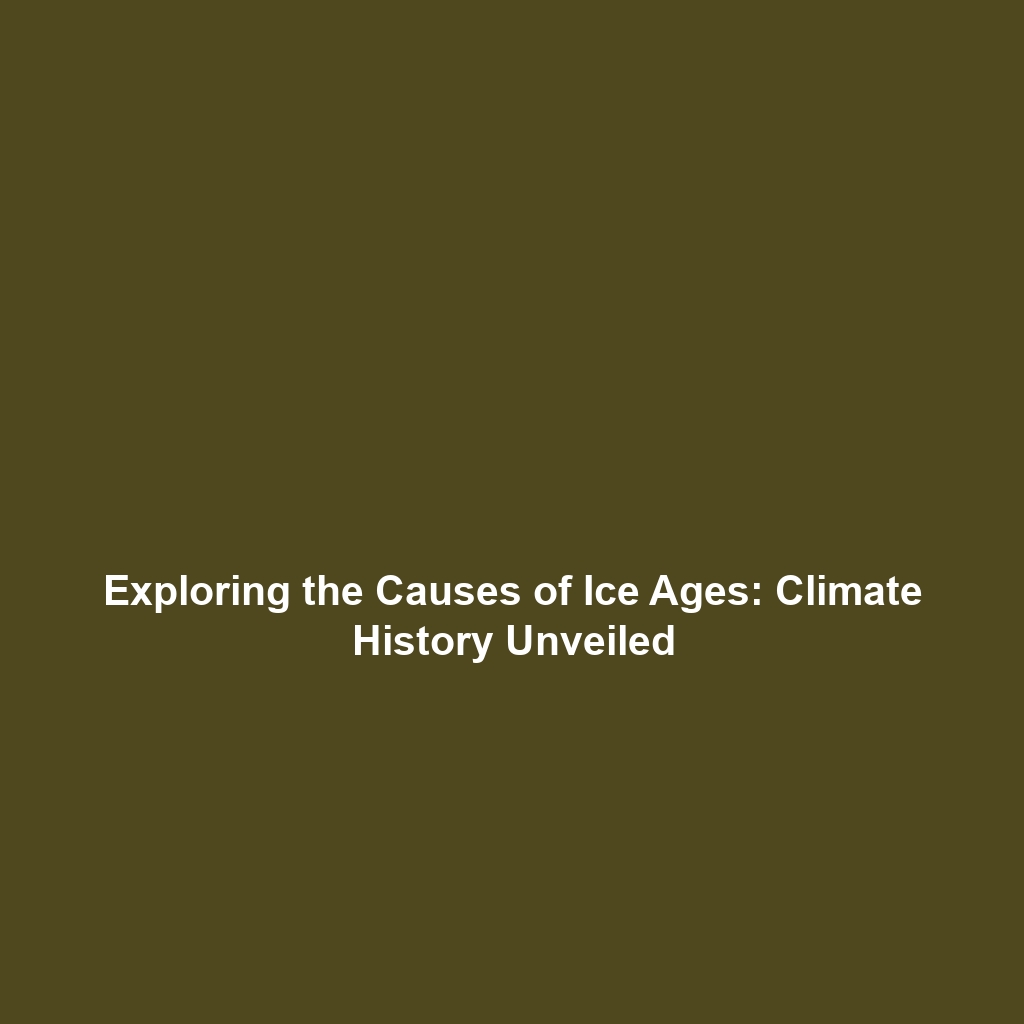The Gradual Cooling of Earth’s Climate Leading to the Development of Ice Sheets in Antarctica and the Arctic
Introduction
The gradual cooling of Earth’s climate marks a pivotal chapter in climate history, shaping the planet’s ecosystems and influencing global weather patterns. This transformative period, which began millions of years ago, ultimately led to the formation of vast ice sheets in Antarctica and the Arctic. Understanding the processes and implications of this cooling trend is vital for comprehending our current climate challenges. By studying the gradual climate cooling, scientists gain insights into not only historical climate dynamics but also future climate scenarios and their potential impacts on global communities.
Key Concepts
The gradual cooling of Earth’s climate is a multifaceted phenomenon that encompasses various scientific principles:
- Glacial Cycles: Over the past 2.4 billion years, Earth has undergone numerous glacial-interglacial cycles, with periodic expansions of ice sheets corresponding to cooler global temperatures.
- Orbital Mechanics: Milankovitch cycles, which include variations in the Earth’s tilt, precession, and eccentricity, significantly contribute to long-term climate changes and have been linked to the development of ice sheets.
- Plate Tectonics: The positioning of continents through tectonic activity influences ocean currents and atmospheric circulation, affecting long-term climate stability.
Applications and Real-World Uses
The knowledge gained from understanding the gradual cooling of Earth’s climate has various practical applications:
- Climate Modeling: Researchers utilize historical climate data to create models that predict future climate trends, helping policymakers make informed decisions.
- Environmental Conservation: Insights into historical climate shifts inform current conservation efforts aimed at protecting vulnerable ecosystems impacted by thawing ice sheets.
- Resource Management: Knowledge of past climate conditions assists industries, such as agriculture and fishing, in adapting to changing environmental conditions.
Current Challenges
While the study of gradual climate cooling presents opportunities, several challenges remain:
- Limited access to deep ice core samples hinders precise dating of ice sheet formation.
- Inconsistencies in climate models can create uncertainty in predictions.
- Interdisciplinary collaboration is essential but often difficult due to varying methodologies and terminologies across fields.
Future Research and Innovations
Upcoming research and technological innovations are poised to enhance our understanding of climate history:
- Advancements in Ice Core Analysis: Next-generation technologies are improving the extraction and analysis of data from ice cores, providing clearer insights into past climate conditions.
- Satellite Observations: Enhanced satellite technology enables comprehensive monitoring of ice sheet dynamics and changes in sea levels, leading to better climate modeling.
- Interdisciplinary Research Collaborations: Efforts to unite climatology, geology, and ecology are paving the way for innovative approaches to studying climate history.
Conclusion
The gradual cooling of Earth’s climate and the corresponding development of ice sheets in Antarctica and the Arctic hold significant relevance in climate history. By analyzing these changes, we gain a clearer understanding of Earth’s complex climate system and the potential future impacts of ongoing climate change. For further exploration on this topic, consider reading about glacial cycles or current Antarctica research.



